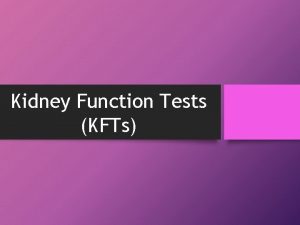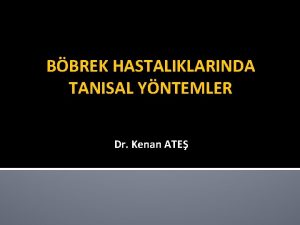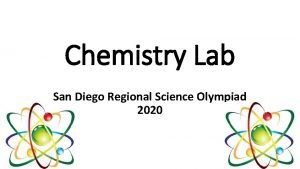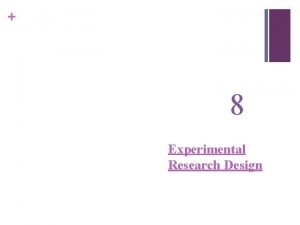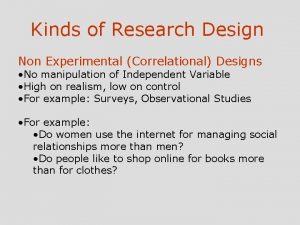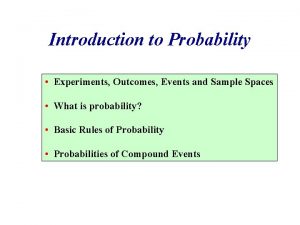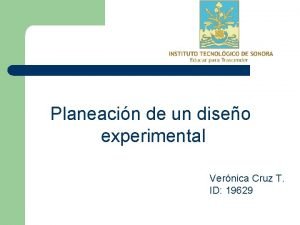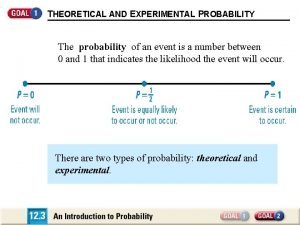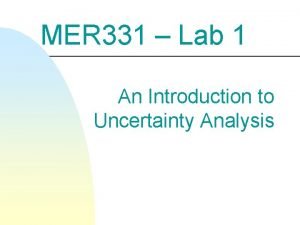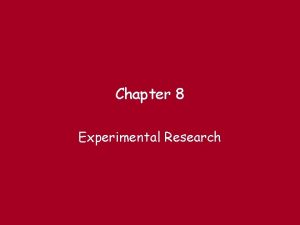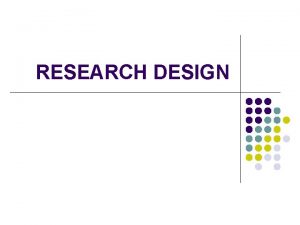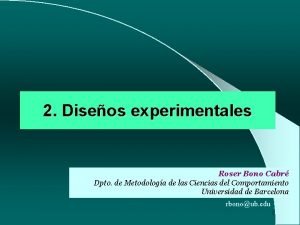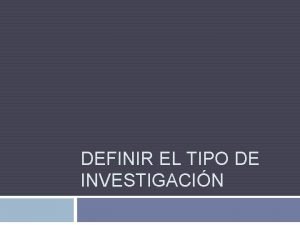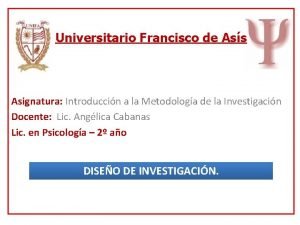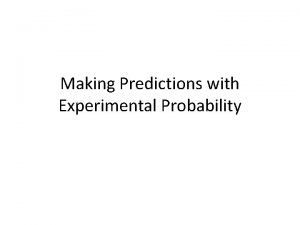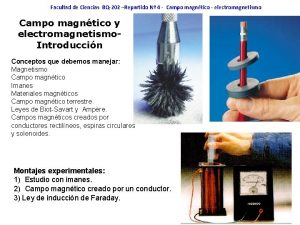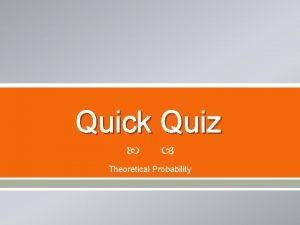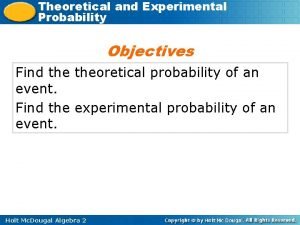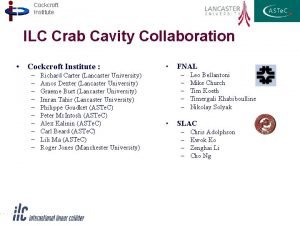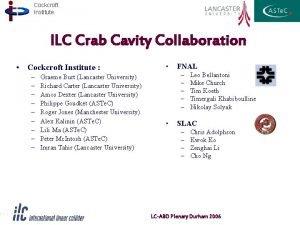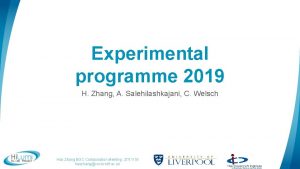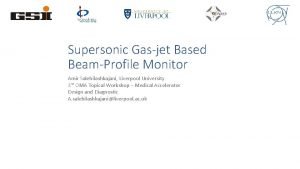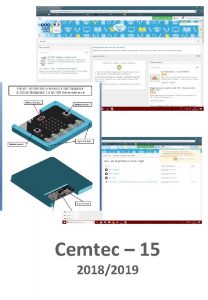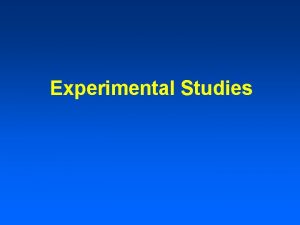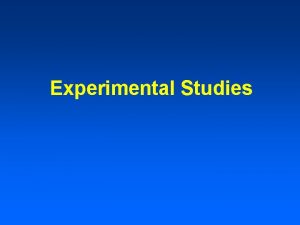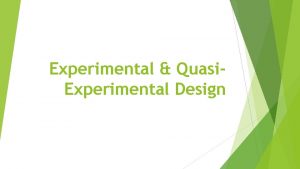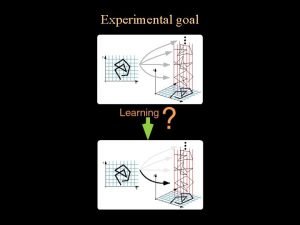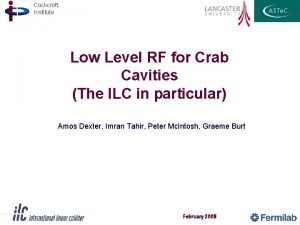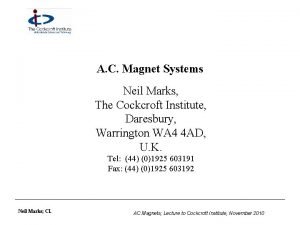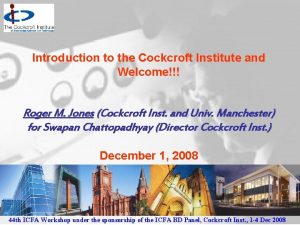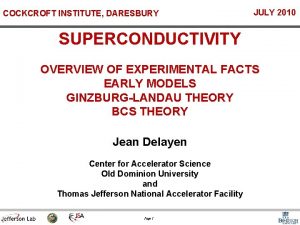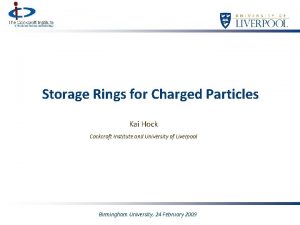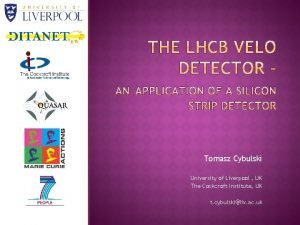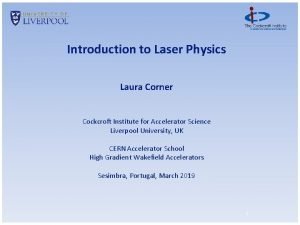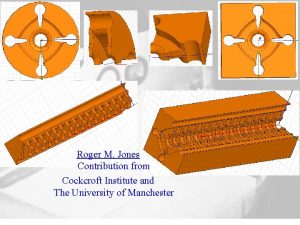Experimental Results from Cockcroft 20182019 A Salehilashkajani H


















![Further optimisation to increase the jet density [2] 3. Optimising the location of the Further optimisation to increase the jet density [2] 3. Optimising the location of the](https://slidetodoc.com/presentation_image_h2/6e6a5f459ea4e9acc79de23cfd4bd952/image-19.jpg)
![Further optimisation to increase the jet density [3] 4. Another 1 st skimmer holder Further optimisation to increase the jet density [3] 4. Another 1 st skimmer holder](https://slidetodoc.com/presentation_image_h2/6e6a5f459ea4e9acc79de23cfd4bd952/image-20.jpg)




![Tests with the 50 micron nozzle [1] § The skimmer assembly was removed and Tests with the 50 micron nozzle [1] § The skimmer assembly was removed and](https://slidetodoc.com/presentation_image_h2/6e6a5f459ea4e9acc79de23cfd4bd952/image-25.jpg)
![Tests with the 50 micron nozzle [2] § The density of the jet at Tests with the 50 micron nozzle [2] § The density of the jet at](https://slidetodoc.com/presentation_image_h2/6e6a5f459ea4e9acc79de23cfd4bd952/image-26.jpg)
![Tests with the 50 micron nozzle [3] § An extra 180 L/S turbo pump Tests with the 50 micron nozzle [3] § An extra 180 L/S turbo pump](https://slidetodoc.com/presentation_image_h2/6e6a5f459ea4e9acc79de23cfd4bd952/image-27.jpg)
![Tests with the 50 micron nozzle [3] § The inlet pressure was set to Tests with the 50 micron nozzle [3] § The inlet pressure was set to](https://slidetodoc.com/presentation_image_h2/6e6a5f459ea4e9acc79de23cfd4bd952/image-28.jpg)



- Slides: 31

Experimental Results from Cockcroft 2018/2019 A. Salehilashkajani, H. Zhang, C. Welsch Amir. Salehilashkajani@Cockcroft. ac. uk BGC Collaboration Meeting 2019/06/13

Outline § § § System highlights. Gas jet signal from Argon, Neon and Nitrogen jets. Comparison between theoretical predictions and the data. Optimisations performed. Pressure tests in 2019 and pumping modifications. Tests with the 50 micron nozzle. BGC Collaboration Meeting 2019/06/13 2

Prototype in the Cockcroft Institute Skimmer Chamber Skimmer Assembly Gas Nozzle Separator Chamber Imaging System Third Skimmer HIPACE 300 L/S Turbo-molecular pump BGC Collaboration Meeting 2019/06/13 Interaction Chamber Moveable Gauge Chamber HIPACE 700 L/S Turbo-molecular pump Dump Chamber

Experimental conditions for the three gases § § § § Electron beam current : 0. 65 m. A. Electron beam energy : 5 Ke. V. Gas jet species : Nitrogen, Neon and Argon. Camera exposure time : 1 s. Inlet pressure 5 bar. Nozzle size : 30 micron. Nozzle to first skimmer distance : 3. 76 mm ( The optimum distance). Third skimmer set vertically. BGC Collaboration Meeting 2019/06/13 4

Nitrogen Gas jet Integration time : 400 S Calibration = 0. 0147 mm/pixel Electron beam z FWHM = 1. 2 mm Integration time : 4 S Calibration = 0. 147 mm/pixel FWHM = 1. 2 mm BGC Collaboration Meeting 2019/06/13 Filter used for Nitrogen : 391 +/- 3 nm, HW : 10 +/- 2 nm Number of photons per second from the jet: ~ 17 Electron beam signal is visible in just 4 seconds via binning. 5

Neon • The background was found to be too strong. An aperture was placed in front of the electron gun. Gas jet Electron beam z Filter used for Neon : 585. 4 +/- 2 nm, HW : 10 +/- 2 nm Integration time of the picture above : 4000 s BGC Collaboration Meeting 2019/06/13 6

Neon • Integration time : 4000 s (+4000 s for the background image). • Background image : Gas-jet off , E-beam on. • Gas jet image : Gas-jet on, E-beam on. Neon Nitrogen • Good agreement between the normalised profiles of neon and nitrogen. • Number of photons per second from the neon jet : 1. 6. BGC Collaboration Meeting 2019/06/13 7

Argon § Three argon filters available : 1. 2. 3. § 476 +/- 2 nm, HW : 10 +/- 2 nm 751 +/- 2 nm, HW : 10 +/- 2 nm Broadband filter centred at 443. 2 , HW : 150 nm (The Ar+ cross section can be significantly increased by integrating over 400 < λ < 500 nm. Residual gas measurements were taken to test the filters. § § § Integration time : 50 s Exposure time : 0. 5 s Interaction chamber pressure : 8. 6 e-7 mbar Electron beam y z BGC Collaboration Meeting 2019/06/13 8

Argon gas-jet with the 476 nm filter • Integration time : 4000 s (+4000 s for the background image). • Background image : Gas-jet off , E-beam on. • Gas jet image : Gas-jet on, E-beam on. • The background was subtracted from the gas jet image and this process was repeated for the three filters. BGC Collaboration Meeting 2019/06/13 9

Argon § 476 nm filter : 1. 2. 3. 4. Exposure time : 1 s Integration time 4000 s (+4000 s background) Good agreement between the profiles obtained from nitrogen and Argon at 476 nm Number of photons per second : 1. 3 § 751 nm filter : 1. 2. 3. Exposure time : 1 s. Integration time 4000 s (also tried 8000 s). No gas jet observed § Broadband filter : 1. 2. 3. 4. Exposure time: 0. 5 s Integration time: 4000 s (+4000 s background) Good agreement between profiles obtained from nitrogen and argon (using the broadband filter. ) Number of photons per second: 4 BGC Collaboration Meeting 2019/06/13 10

Density Measurements (Photon Gauge) Linear calibration of the Nitrogen gas Nitrogen density : ~1 E 15/m^3 Argon density: ~2 E 15/m^3 Neon density: ~2 to 3 E 15/m^3 § § § The pressure in the interaction chamber is increased using a leaking valve. A series of residual gas measurements are taken to find a calibration between number of photons and pressure. This linear plot is then used to measure the equivalent pressure for the jet BGC Collaboration Meeting 2019/06/13 11

Density Measurements (Moveable Gauge) § Moveable gauge density measurements using a slit opening was presented during the last collaboration meeting. § Density was measured in the diagnostic chamber. § Slit-opening scan: § Pin-hole opening details : 1. Horizontal slit opening : 10 mm*0. 5 mm 2. Gas-jet and the gauge are set to pulse mode. 3. A full scan of the jet took around 15 hours BGC Collaboration Meeting 2019/06/13 1. Pin-hole size : 0. 5 mm. 2. Gas-jet and gauge continuously on. 3. A full scan of the jet takes 3 -4 hours. 12

Density measurements with the pin-hole gauge § A scan was taken using the pin-hole opening for nitrogen, neon and argon under similar experimental conditions. (30 micron nozzle at the optimum nozzle-skimmer distance and the third skimmer set vertically). § Density measured by : Nitrogen Neon 9. 1 mm Argon 1 mm BGC Collaboration Meeting 2019/06/13 13

Comparing the gases S. Udrea, P. Forck, E-Lens Collab. Meeting, Nov. 27 th, 2018 BGC Collaboration Meeting 2019/06/13 14

Theoretical Photon Numbers vs Experimental Ones Emitter Photon Number/s (LHC conditions) Expected Photon Number/s (Lab conditions) Experimental Photon Number per second N 2+ 3. 4 E 6 2. 4 E 1 17 Ne 2. 5 E 4 1. 76 1. 6 Ar (750 & 751. 5) 2. 9 E 4 1. 17 - Ar+ ( 476) 2. 3 E 4 1 1. 3 Ar+ (Broadband) N/A 4 LHC Conditions : • Cross sections calculated at 10 Ke. V • Gas jet density assumed to be 2. 5 E 16 • Current assumed to be 5 A BGC Collaboration Meeting 2019/06/13 Lab Conditions : • Cross sections calculated at 5 Ke. V (Assuming Linearity) • Gas jet density : 1. Nitrogen: 7 E 14/m^3 2. Argon: 4 E 15/m^3 3. Neon: 6. 5 e 15/m^3 • Current assumed to be 0. 65 m. A 15

Integration Times For Profile Measurement § “BIF based beam diagnostics performed at GSI showed that a few hundred of photons are usually enough for obtaining well defined profiles. “ (Milestone 1. 1) § In the case of Nitrogen 100 photons is enough but due to the strong background from Neon, one needs higher number of photons (around 5000). Beam Emitter Estimated photon number per second Corrected photon number per second Estimated Integration Time Electron Nitrogen 3. 4 e 6 9. 52 e 4 0. 001 s Proton Nitrogen 2. 8 e 4 7. 84 e 2 0. 1 s Electron Neon 2. 5 e 4 6. 5 e 3 1 s Proton Neon 1. 7 e 2 4. 42 e 1 100 s Electron Ar (476) 4 e 4 6. 4 e 3 1 s Proton Ar (476 1. 4 e 3 2. 24 e 2 25 s Electron Ar (Broadband N/A 2. 6 e 4 0. 2 s Proton Ar ( Broadband) N/A 8. 9 e 2 7 s BGC Collaboration Meeting 2019/06/13 16

Gas-jet behaviour from theory § BGC Collaboration Meeting 2019/06/13 17

Further optimisations to increase the jet density 1. The second skimmer was removed completely. Reason: If there is a large misalignment between 1 st and 2 nd skimmer, there will be a photon number increase after removing the 2 nd skimmer. Result: Pressure increase in the skimmer chamber and interaction chamber but no change in the gas-jet density/photon number. 2. The skimmer assembly was removed and the system was realigned with nozzle placed at the optimum location. Result: No change in the gas jet density/photon number. BGC Collaboration Meeting 2019/06/13 18
![Further optimisation to increase the jet density 2 3 Optimising the location of the Further optimisation to increase the jet density [2] 3. Optimising the location of the](https://slidetodoc.com/presentation_image_h2/6e6a5f459ea4e9acc79de23cfd4bd952/image-19.jpg)
Further optimisation to increase the jet density [2] 3. Optimising the location of the third skimmer using the new set of slit-opening third skimmers. Result: 10% Increase in the density of the jet. § The third skimmer was first set horizontally and then completely removed to find the best horizontal position for the skimmer. Horizontal profile of the jet. Vertical skimmer(original) Horizontal skimmer No skimmer Verical skimmer (optimised § New slit opening third skimmer were ordered and placed at the optimum position. Old design BGC Collaboration Meeting 2019/06/13 New design 19
![Further optimisation to increase the jet density 3 4 Another 1 st skimmer holder Further optimisation to increase the jet density [3] 4. Another 1 st skimmer holder](https://slidetodoc.com/presentation_image_h2/6e6a5f459ea4e9acc79de23cfd4bd952/image-20.jpg)
Further optimisation to increase the jet density [3] 4. Another 1 st skimmer holder was designed with a thickness of 1 mm instead of 4 mm. The skimmer assembly was removed and the system was aligned with the new thin skimmer holder. Reason: Decreasing the distance between the nozzle and the skimmer will increase the chance of off-axis jet reflecting back in to the gas jet. Result: 10 -15% increase in the gas jet density/photon number. 1 st Skimmer holder 4 mm Nozzle BGC Collaboration Meeting 2019/06/13 12. 7 mm 9 mm 20

Pressure tests (normal operating conditions) § Eric and Julien from CERN’s vacuum group visited Cockcroft Institute on 13 -14 th of March. § Normal operating conditions : BGC Collaboration Meeting 2019/06/13 21

Pressure tests (normal operating conditions) § The first test was taken under normal operations. The following parameters were kept constant throughout all the tests. § Nozzle to first skimmer distance - Optimised to 3. 7 mm § Electron gun conditions - Current : 0. 66 m. A , Energy : 5 Ke. V § Inlet gas : Nitrogen at 5 bar § Total integration time: 400 seconds, Exposure time for each photo: 2 seconds § Number of photons detected over 400 seconds : 7411 Pressures in each of the chambers (mbar) (5 bar inlet): Inlet pressure Nozzle Chamber Skimmer Chamber (1) Skimmer Chamber (2) Interaction Dump Chamber 5 bar 3. 9 e-3 8. 4 e-6 7. 3 e-7 4 e-9 1. 4 e-9 Technical Details : Nozzle size : 3 E-5 mm Skimmer 1 : Conical _ 1. 8 e-4 mm Skimmer 2 : Conical _ 4 e-4 mm Skimmer 3 : 4*0. 4 mm BGC Collaboration Meeting 2019/06/13 22

Summary of the pressure tests Three primary pumps were tested (n. XDS 15 i from EDWARDS, EBARA PDV 250 and ACP 28). 1. Using either of these three pumps as the backing pump for the nozzle chamber does not change the vacuum level or the gas jet density. 2. Connecting either of the backing pumps directly to the nozzle chamber and turning off the turbo pump in this chamber results in a pressure of 0. 15 mbar and no gas-jet. 3. Operating the turbo-pumps in the nozzle chamber and skimmer chamber in standby speed (reducing the speed to 2/3) will reduce the power consumption by a factor of 2 but does not affect the vacuum levels or the gas jet density. 4. Turning off TMP 2 and connecting either of the three pumps directly to the volume 1 of skimmer chamber (volume between the first and second skimmer) will result in 35% reduction in gas-jet density. The pressure in the skimmer chamber will increase by a factor of 10. 5. Using either of the three primary pumps as the backing pump for all 5 of the turbo pumps (except the one in the nozzle chamber) does not affect the vacuum level or the density of the jet. 6. Full report of the vacuum tests and the pressure in each of the chambers during the tests can be found on : https: //indico. cern. ch/event/791437/contributions/3374473/attachments/1820469/2977316/Vacuu m_groups_visit. pdf BGC Collaboration Meeting 2019/06/13 23

Changing the nozzle diameter § The 30 micron nozzle designed by CERN can be replaced with two nozzles designed at Cockcroft with varying diameters of 50 micron and 20 micron. BGC Collaboration Meeting 2019/06/13 24
![Tests with the 50 micron nozzle 1 The skimmer assembly was removed and Tests with the 50 micron nozzle [1] § The skimmer assembly was removed and](https://slidetodoc.com/presentation_image_h2/6e6a5f459ea4e9acc79de23cfd4bd952/image-25.jpg)
Tests with the 50 micron nozzle [1] § The skimmer assembly was removed and the system was aligned with the 50 micron nozzle. § The position of the third skimmer was optimised with respect to the new alignment. § A series of measurements were taken at different pressures and different nozzle-skimmer distances using the electron gun. Integration Time : 400 s Electron Beam : 0. 65 m. A , 5 Ke. V Inlet Gas : Nitrogen 1200 • 1000 Distance (mm) Photon Number 11. 76 800 10. 76 9. 76 8. 76 600 7. 76 6. 76 400 5. 76 4. 76 200 3. 76 0 0 1 2 3 4 5 6 7 For an Inlet pressure of 5 bar, the optimum nozzle-skimmer distance is 10. 7 mm (Compared to the 30 micron nozzle which was 3. 76). • At distances below 7 mm, gas jet density decreases as the Inlet pressure is increased. • Pressure data for an inlet pressure of 5 bar is displayed below. Nozzle Skimmer Interaction Dump Chamber Chamber (mbar) r(1) (2) (mbar) 8 Inlet Pressure BGC Collaboration Meeting 2019/06/13 30 um 3. 80 E-03 3. 90 E-06 3. 80 E-07 7. 68 E-09 2. 21 E-09 50 um 8. 2 E-03 5. 2 E-05 4. 8 E-06 1. 8 E-08 5. 25 E-09 25
![Tests with the 50 micron nozzle 2 The density of the jet at Tests with the 50 micron nozzle [2] § The density of the jet at](https://slidetodoc.com/presentation_image_h2/6e6a5f459ea4e9acc79de23cfd4bd952/image-26.jpg)
Tests with the 50 micron nozzle [2] § The density of the jet at the optimum distance for the 50 micron nozzle is 6 -7 times lower than that of the 30 micron nozzle. This was also confirmed with the moving gauge. Pressure data for an Inlet pressure of 5 bar is displayed below. A rough horizontal scan was conducted at the most dense part of the jet using the moving gauge. The reading from the moving gauge is in agreement with the measurements taken using the electron gun. BGC Collaboration Meeting 2019/06/13 26
![Tests with the 50 micron nozzle 3 An extra 180 LS turbo pump Tests with the 50 micron nozzle [3] § An extra 180 L/S turbo pump](https://slidetodoc.com/presentation_image_h2/6e6a5f459ea4e9acc79de23cfd4bd952/image-27.jpg)
Tests with the 50 micron nozzle [3] § An extra 180 L/S turbo pump with a dedicated primary pump was added to the nozzle chamber. § Pressure in the nozzle chamber decreased by 30% and the gas jet density increased by 10~15% Nozzle (5 bar Inlet) Nozzle Chamber (mbar) Skimmer Chamber(1) (mbar) Skimmer Chamber( 2) (mbar) Interaction Chamber (mbar) Dump Chamber (mbar) 30 um 3. 80 E-03 3. 90 E-06 3. 80 E-07 7. 68 E-09 2. 21 E-09 50 um 8. 2 E-03 5. 2 E-05 4. 8 E-06 1. 8 E-08 5. 25 E-09 - 3. 1 e-6 1. 29 e-8 3. 88 e-9 50 um (extra 5. 6 e-3 turbo) BGC Collaboration Meeting 2019/06/13 27
![Tests with the 50 micron nozzle 3 The inlet pressure was set to Tests with the 50 micron nozzle [3] § The inlet pressure was set to](https://slidetodoc.com/presentation_image_h2/6e6a5f459ea4e9acc79de23cfd4bd952/image-28.jpg)
Tests with the 50 micron nozzle [3] § The inlet pressure was set to 5 bar and a series of measurements were taken at different nozzle to skimmer distances. Integration Time : 400 s Electron Beam : 0. 65 m. A , 5 Ke. V Inlet Gas : Nitrogen At larger distances, decreasing the pressure in the nozzle chamber Increases the pressure of the jet. BGC Collaboration Meeting 2019/06/13 28

Tests with the 30 micron nozzle § The skimmer assembly was removed and the gas jet system was aligned with the 30 micron nozzle from CERN. § The 180 L/S turbo-pump was replaced with a leaking valve. BGC Collaboration Meeting 2019/06/13 29

Tests with the 30 micron nozzle § Test conditions : Integration Time : 400 s Electron Beam : 0. 65 m. A , 5 Ke. V Inlet Gas : Nitrogen Nozzle-skimmer distance = 3. 76 (optimum distance) § The pressure in the nozzle chamber was gradually increased from 2. 3 e-3 mbar to 1. 7 e-2 mbar. 4, 50 E+03 § 4, 00 E+03 Photon Number 3, 50 E+03 § 3, 00 E+03 2, 50 E+03 § 2, 00 E+03 1, 50 E+03 1, 00 E+03 At a pressure of 1. 7 e-2 mbar, gas jet density is almost half of its nominal value at 3 e-3 mbar. Pressure cut-off point is between 1. 7 e 2 mbar and 1. 5 e-1 mbar. Assuming linearity it lies somewhere between 5 to 6 e-2 mbar. The gas jet density with the 30 micron nozzle is approximately 4 times higher than the 50 micron nozzle for the same pressure in the nozzle chamber. 5, 00 E+02 0, 00 E+00 2, 00 E-03 4, 00 E-03 6, 00 E-03 8, 00 E-03 1, 00 E-02 1, 20 E-02 1, 40 E-02 1, 60 E-02 1, 80 E-02 Pressure in the nozzle chamber (mbar) BGC Collaboration Meeting 2019/06/13 30

Overview § The gas-jet signal from the Neon, Argon and Nitrogen jets were characterised. § The expected number of photons per second is in relatively good agreement with the estimated number. § The gas jet density of Argon, Neon and Nitrogen was characterised using the photon gauge method and the moving pressure gauge. § The integration times in LHC conditions was estimated. § The pressure tests concluded that running the turbo-pumps on reduced rotational speed would be a solution to overheating. § The results from the experiments using the 50 micron nozzle, specifically the effect of nozzle to skimmer distance on the jet density was shown. BGC Collaboration Meeting 2019/06/13 31
 Cockcroft gault equation
Cockcroft gault equation Cockcroft gault equation
Cockcroft gault equation Ckd epi formülü
Ckd epi formülü Ossaluria valori normali
Ossaluria valori normali Experimental vs nonexperimental
Experimental vs nonexperimental Experimental vs non experimental
Experimental vs non experimental Experimental vs non experimental
Experimental vs non experimental Research approaches and designs
Research approaches and designs Disadvantages of experimental research
Disadvantages of experimental research Science olympiad experimental design practice test
Science olympiad experimental design practice test 2x3 within subjects design
2x3 within subjects design Experimental research design
Experimental research design Evidencia experimental
Evidencia experimental Cuasi experimento
Cuasi experimento No arranjo experimental da figura os corpos a e b
No arranjo experimental da figura os corpos a e b Intersection and union of events
Intersection and union of events Mendel's experimental design
Mendel's experimental design Ruido experimental
Ruido experimental Theoretical probability vs experimental probability
Theoretical probability vs experimental probability How to calculate experimental uncertainty
How to calculate experimental uncertainty Experimental research steps
Experimental research steps Non-experimental design definition
Non-experimental design definition What is experimental group
What is experimental group Reactive arrangements external validity
Reactive arrangements external validity Diseño experimental
Diseño experimental Investigacion correlacional
Investigacion correlacional Investigación no experimental ejemplos
Investigación no experimental ejemplos Making predictions with probability
Making predictions with probability Ciencias
Ciencias Theoretical and experimental probability quiz
Theoretical and experimental probability quiz Definition of random experiment
Definition of random experiment What is matched pairs design
What is matched pairs design
